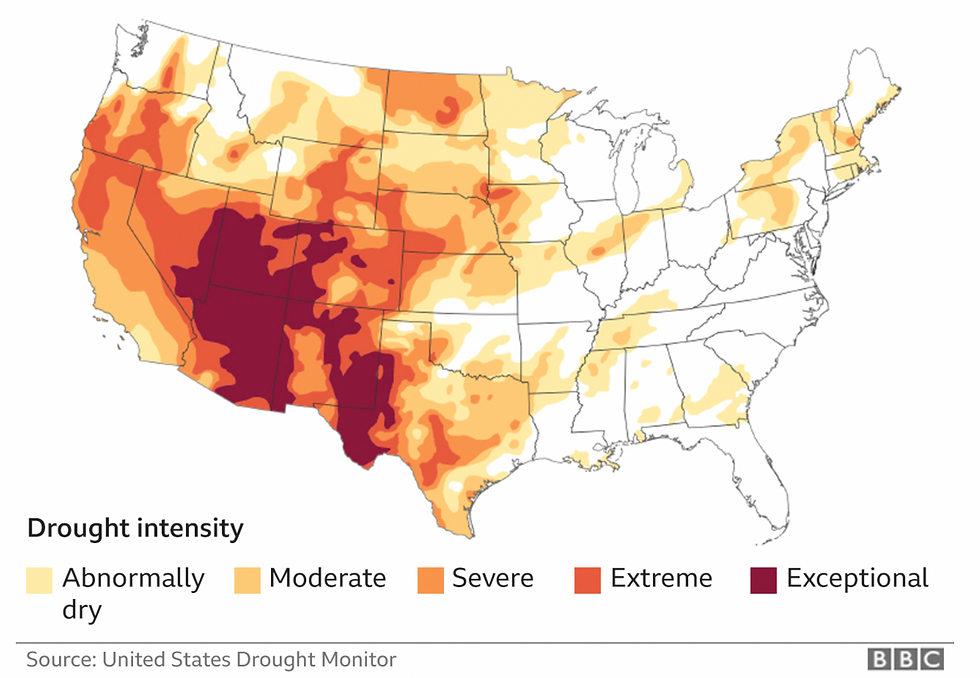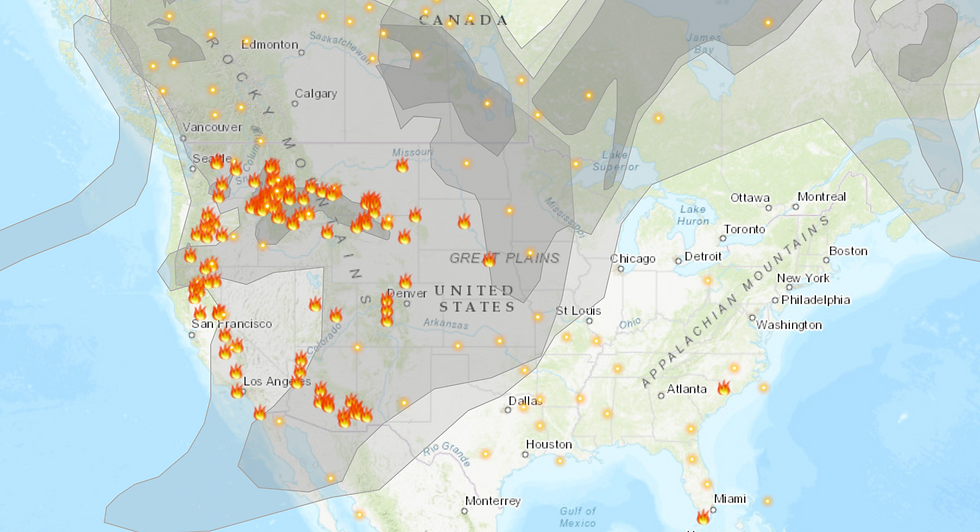What Happens to Wildlife in a Wildfire?
- Christine Iversen
- Jul 14, 2021
- 4 min read
With droughts and record-high temperatures soaring in the US (particularly in the western and southwestern states), wildfires are increasingly becoming a threat -- not only to the human population, but also to the flora and fauna that live on these arid lands.
At the time of publication, the US Department of Agriculture says half the nation is under some form of drought.

As a result, wildfires are burning in California, Oregon, Nevada, and Arizona in the West, and as far north as Minnesota, and even Alaska. According to NBC News, firefighters across 12 states are battling wildfires on more than 850,000 acres at the time of publication.

The fires have of course been detrimental to the human population. Not only do homes and buildings burn, but wildfires also leave people without water and electricity for extended periods of time.
But what about the wildlife?
What Do Wildlife Do During a Wildfire?
Contrary to the images you may have in your head of large animals fleeing from flames, scientists studying animal behavior during wildfire burns around Yellowstone National Park in 1988 observed bison, elk, and other hoofed mammals grazing and resting just 300 feet or less from burning trees.
Most large animals, such as deer, elk, and bears, steer clear of the fires and seek refuge in unaffected areas, rivers or lakes if in imminent danger. Birds fly away, generally returning periodically to check if it’s safe, and small animals like lizards, snakes, and bugs may burrow underground or in rocks.

Other species, like tortoises, snakes and toads, cope with wildfires by burrowing underground. And many plants have unique adaptations, such as thick bark that can burn off, to help them survive fires.
As in any situation, very old, young, sick, or immobile animals are of course at risk. But according to the organization Surviving Wildfire, animal deaths in wildfires are most often due to smoke inhalation rather than contact with flames.
Changes in Animal Habitats After a Wildfire
The biggest threat to animals from wildfires is changes in their habitats. Immediately following a fire, some animals may lose their homes as well as food and water sources, forcing them to move elsewhere.
At a time when human activities are continually shrinking natural habitats, this can be a big challenge.
But it’s not all doom and gloom for those that do survive.
Fires Can Lead To Increased Food Sources
Depending on the type of vegetation in an affected area, burning can actually increase or improve vegetation for wildlife from a few years to as long as 100 years after a fire has burned. This is because fires burn out dead vegetation and leave nutrient-rich soil in their wake.
With old vegetation gone, new growth can arise quickly. Many species of vegetation actually need fire to thrive. Heat can cause some mushrooms to release spores, and other plants can only seed after a blaze.

As an effect, the nutritional content and digestibility of plants increases in many cases as well. Immediately following a fire, dead wildlife becomes a food source for scavengers such as grizzly bears, coyotes, eagles, crows, and ravens.
Trees killed by the fire become food for millions of insects that then provide an increase in food supply for birds and reptiles. The debris also provides new shelter for reptiles, small mammals, and even bears.
How Human Activity Is Affecting Wildfire Recovery
While this is all good news, the fact remains that wildfires continue to grow in intensity and size, and the wildfire seasons are getting longer each year.
This is in large part due to the fact that humans over the past century have been suppressing wildfires, a natural occurrence that in the long run is beneficial to forests and the animals that cause them home.
Because of this, the delicate balance of the ecosystem has been disturbed. Dead brush has accumulated greatly, meaning that when a wildfire does burn, it has much more fuel. They burn hotter, destroying more plant and animal life than usual.
In short, hotter, larger fires are destroying more habitat and leading to a significant increase in smoke. With fewer trees, it takes longer for air quality to improve. All of these factors make it more difficult for animals to recover after a wildfire.
As temperatures and incidents of droughts continue to rise globally, wildfires are becoming a more severe threat to wildlife and forests than ever before.
What Can We Do To Help?
Humans do have options to help restore the balance.
For one, when you see a wildfire burning, know that it can be a healthy and even helpful event for the forest and the wildlife that resides there.
Controlled burns should be implemented, with caution, to help clear dead vegetation and reduce the intensity of fires in the future, although this can be risky in forests with too much kindling built up from years of neglect.
Keeping water sources clear of debris and vegetating the banks of streams, rivers, and ponds can minimize erosion, help ensure water quality, and moderate water temperatures. This way, when a wildfire does burn, animals have water sources to take refuge in.
Of course, there is the question of climate change, which is leading to increased temperatures and droughts. Individuals can continue to put pressure on industries leaving large carbon footprints on the environment. We can also hold ourselves accountable for our personal carbon footprints.
Lastly, we can contribute to organizations working to help species adapt to climate change, like the Wildlife Adaptation Innovation Fund.
CBS News provides a list of organizations accepting donations to help evacuees, firefighters, and animals affected by the wildfires on the West Coast.










Comments